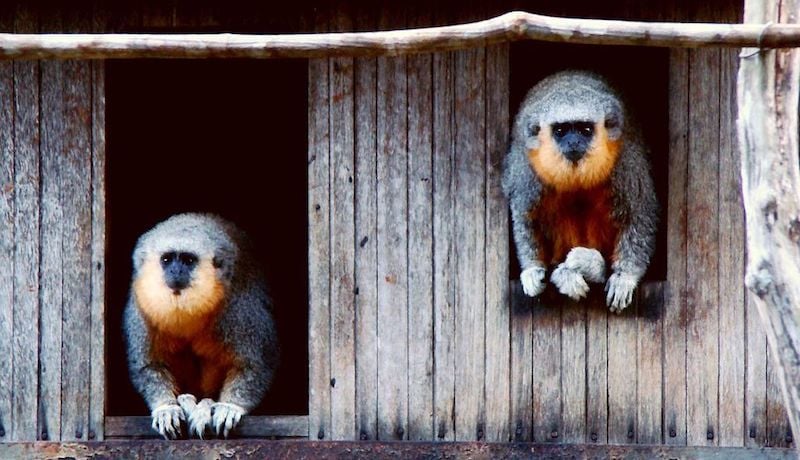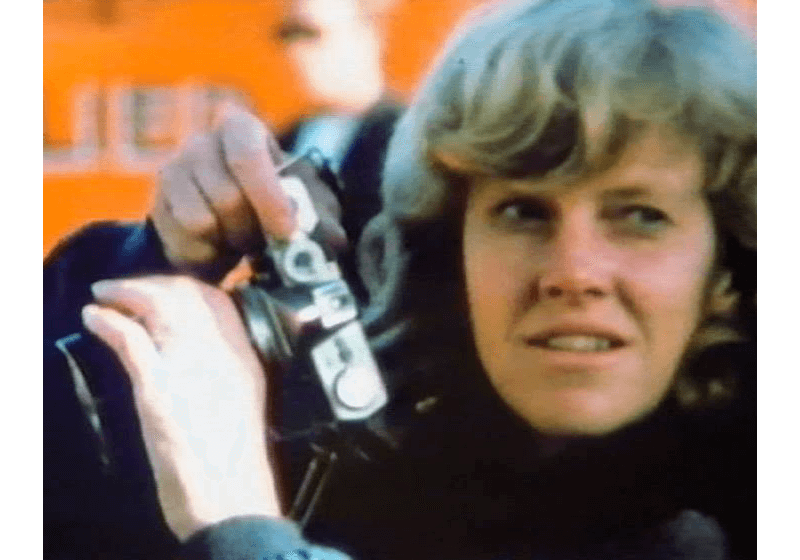Get insight on the methods used by one of the most accomplished animal recordists in film and game audio, Ann Kroeber.
Layering animal sound effects is a common sound design trick. An elephant screech famously contributes to the classic Star Wars® TIE Fighter sound, roaring lions are tucked into revving car engines, and fictional creature sounds often borrow those of real creatures.
Animal sounds are such an effective design tool because of their unique, organic range of expression. But how do you go about capturing a sound source with so many variables? Celebrated recordist and sfx curator Ann Kroeber would say anybody can do it.
Kroeber, along with her late partner Alan Splet, are renowned for pioneering the evocative use of sound effects in film with major directors like David Lynch, Carroll Ballard, and Peter Weir. With decades of experience and material from countless projects as a recordist, sound designer, and effects editor, Kroeber created Sound Mountain - an acclaimed, extensive recording collection providing sound for many award-winning films and games.
To coincide with our new Stallion sound library - the third exclusive Pro Sound Effects release from Kroeber and Splet - we sat down with Kroeber to learn her approach to working with animals, and how she captured the collection’s incredible recordings from expressive horse vocalizations to thunderous galloping. Her approach may surprise you, and your results may vary. (Please be safe out there, recordists!)
PSE: Recording animal sound effects has become one of your specialties. When did you first become interested in working with animals?
Ann Kroeber: The first feature film that I did sound on was The Black Stallion. Many of the sounds in this new library were recorded for that film. I went around recording a lot of horse vocals, and I found that I have a knack for talking to animals.
When I'm recording, I have no expectations, and I just become all ears. As soon as I put the headphones on and turn on the recorder, I'm completely present there. I just talk to the animals, showing and explaining to them what I'm doing: the sound goes in this microphone, and it goes through the recorder, and comes out here. Animals are very sensitive, and I think they’re grateful that someone appreciates their intelligence. Sometimes, I'll play something for them to let them hear it, and that just really gets them going. So, I did that starting off with The Black Stallion and just being able to get close with the horse.
 The Sound of Story 2016 – Women in Sound Forum
The Sound of Story 2016 – Women in Sound Forum
Credit: Lighthouse / Photo by Adam Bronkhorst (adambronkhorst.com)-
How about the intense galloping recordings from the library?
Working on The Black Stallion is also where I met my late husband, Alan Splet. He basically built a whole new rig to record horses. He put a lavalier microphone under the belly of the horse and covered it with lots of acoustifoam to shield from the wind - so that captured not only the horse hooves while running, but also the breathing sounds from the belly. And then, he set up another rig on the harness so a microphone is in front of the horse's nose as he's running. The rhythmic breathing sounds at the same time that the horse is running gives this incredible sense of drama when the horse is racing. I don't believe that’s ever really been done in the same way before or since.
Alan won a Special Achievement Academy Award® in Sound Editing for his work on The Black Stallion. The horse sounds were an integral part of that award. We worked together very closely for about a year and a half on that film.
 Splet and Kroeber with the custom horse rig
Splet and Kroeber with the custom horse rig
What other recording projects made it into the Stallion library?
Later I was hired by Gary Rydstrom for The Horse Whisperer. Gary told me that mustang stallions are more vocal than other horses. I found a mustang in this beautiful preserve that was a sort of refuge for animals who had been saved from being slaughtered. This mustang had just come in from the range two days earlier and was very skittish, especially when he saw my microphone and the big fluffy windscreen. But I just sympathetically told him it’s ok, and I explained what the mic was to him and that I wanted to get the sound of his voice. I'm always shocked that the animals get it so much, but they sure do.
I did this silly thing where I said to him, I said, "I'm working on this movie and there's this big star in it. His name is Robert Redford. But really... YOU’RE the star." And he looks at me like, “Yeah,” and he reared up and let out this huge call. It was so cool. He started talking to me, and he was completely conscious of the microphone the whole time, like he was talking into it.
Another trick we used was that the woman who owned the preserve walked some other stallions over. The stallion and I were protected behind a fence, and she walked a mare between us and the other stallion to get the horse to respond, and he did. There were quite a few words he had to say, but there are also subtle snorts and lovely little sort of charming, cute vocals that he gave me.
There are also recordings from when I worked on another movie, Hidalgo. I went to the Sahara desert and recorded a horse race, so there are some great horses running on sand in the library.
“When I’m recording, I have no expectations, and I just become all ears. As soon as I put the headphones on and turn on the recorder, I’m completely present there.”
 Recording geese
Recording geese
So after your first experience with horses for The Black Stallion, did you decide to continue focusing on recording animals following that?
No, but it just happened from time to time. After The Black Stallion, I was assigned to go out and record monkeys in the San Francisco zoo, I think they were chimpanzees. When I got there, the zookeeper said, "There are two rules I have for you: you can't look at them, and you can't talk to them." I said, "I can't do that. I'll sign something for you, but my whole method of recording animals is I need to be able to talk to them.” So she said OK and kind of rolled her eyes, you know.
I didn't see any monkeys around, but then I looked up and there was one little monkey staring down at me. And I said, "Hey, come here. I want to show you something. Come here." The monkey came down and the whole troupe followed him - it was just incredible. I set up the recorder on a little table and just explained to them, “The sound goes in here and I'm trying to get your voices.” They were all like little Kindergarten kids, sitting cross-legged around the table, fascinated.
I had recorded some other Dusky Titi monkeys in another part of the zoo. They're little "yap, yap, yap" kind of monkeys. I played those sounds for them, and I said, "You guys can do better." And they all jumped up and they started hooting and hollering around me. I thought I had died and gone to heaven. It was just amazing. One even jumped on my shoulder and was making sounds right into the microphone. They got a little wild and I finally had to stop because I didn’t want it to get too out of hand.
 Dusky Titi monkeys-
Dusky Titi monkeys-
Do you ever find it difficult to relax? Especially around the larger animals you’ve recorded like tigers and cheetahs.
I think what happens is that I'm just very present with them. I don't think about other things. I don't think about how I have to record, you know, or anything. I'm just there. I don't think it’s that extraordinary - I think anybody can do it. It's just showing respect for them, and realizing how smart they are and that they’re not so different. They actually seem really pleased that you respect them, that you communicate with them, that they're learning something new.
I just point to my ears, and say, "I'm trying to get this sound, and it goes in here, and it goes around there." And I'll play it for them, and I point to them, and I point to my lips… You wouldn't expect it, but they get it.
Aside from communicating with them, are there other techniques you use? Especially to coax out vocalizations?
Telling them about Robert Redford (laughs). No, but I mean, with getting the vocalizations, it's all about that - pointing the microphone at them and making little sounds with my mouth. It's interesting that they do get that. It's just being quiet and being in their space with them.
 Recording cheetahs for Duma
Recording cheetahs for Duma
What’s the role of the animal trainer in the recording process?
Well, usually they get in there and say, "You've got to stand back and be careful, and blah, blah blah.” So I try to not be around them. I mean, I'm not stupid. I'm not gonna go into the tiger cage. When I recorded cheetahs for the film Duma, the trainer wanted me 25 feet away because these French correspondents had just come to the preserve and one of them had gotten badly mauled. I was with another person who was also recording, and fortunately he went off with the trainer so I got to hang out and just do my thing. I would just slowly, slowly walk up, not even saying anything, shake my head, put my finger to my mouth, giving them that kind of reassurance. And by the end of the day, when I was out there recording, I actually got to pet one of them - with a trainer there watching. We were buddies.
Have you ever worked with animals that are trained to make certain sounds on a cue?
No, I don’t think I’ve ever done that. It's a natural thing. What's so cool is letting them come up with stuff and letting amazing experiences happen. That's the one thing I don't do is plan. I don't over-plan at all when I'm recording animals, and I never have any expectations that I'm gonna get anything.
I’ve heard animals recordings (not from you) that make me wonder how certain sounds are prompted...hopefully not in any inhumane sort of way.
Oh, hurting an animal is just so not something I could do. I mean, with pigs, I can't go to a place where they're gonna be slaughtered. It's just too painful. When I described the horse rig before, it didn't hurt the horse - it wasn't heavy or anything. We'd feed him carrots and good stuff.
“It’s just showing respect for them, and realizing how smart they are and that they’re not so different. They actually seem really pleased that you respect them, that you communicate with them, that they’re learning something new.”
 Kroeber on the set of Blue Velvet
Kroeber on the set of Blue Velvet
How much do you try to control elements of the space you’re in, like surfaces and surroundings? Or do you mainly adjust to the circumstances and focus on staying present?
That really depends on the project, but I'm very conscious of different surfaces and spaces. With animals it’s usually better to be outside, and it’s important to be very conscious of background noise. I've been fortunate that I've been able to record on preserves, and there's a number of them around where I live.
But I find it’s getting harder nowadays. Unfortunately, zoos where I used to do a lot of recording have this new theory somebody propagated that humans shouldn't be too close to the animals and they shouldn't interact with them. They want to keep it natural, and that's just nonsense. I mean, they're in compounds. They're around humans.
Anything else you would like to share about your experiences or the new Stallion library?
This is very special for me to be releasing my horse sounds. I've been really protective of them, but I feel like it's time to share them with a new generation of sound artists. If you need horses, these are a little different and really add drama and expression. They’re real characters.
Our new Stallion library is available now.
Further reading/listening:
• SoundWorks Collection Podcast - Ann Kroeber Interview
• Tonebenders Podcast - Ann Kroeber Interview
• Designing Sound - Ann Kroeber Interview












